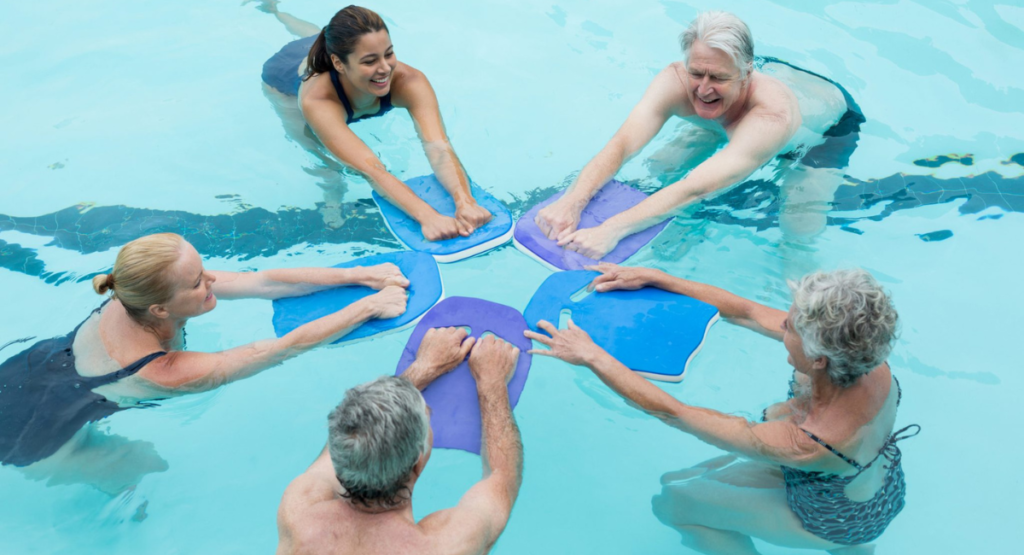Stroke is a leading cause of disability worldwide, often leaving survivors with significant physical and cognitive challenges. Rehabilitation is a critical component of recovery, aiming to restore as much function as possible. Among the various rehabilitation techniques, aquatic therapy has emerged as a highly effective method for improving pain, mobility, and balance in stroke survivors. Sukino Healthcare, a pioneer in post-acute and long-term care, has been at the forefront of integrating aquatic therapy into their comprehensive stroke rehabilitation programs.
Understanding Aquatic Therapy
Aquatic therapy, also known as hydrotherapy, involves performing therapeutic exercises in a pool. The unique properties of water, such as buoyancy, resistance, and hydrostatic pressure, create an ideal environment for rehabilitation. These properties allow patients to perform movements that may be difficult or impossible on land due to gravity and body weight. Water reduces the strain on joints and muscles, making it an excellent medium for gentle and effective exercise.
The Role of Aquatic Therapy in Pain Management
Pain is a common issue for stroke survivors, often resulting from muscle spasticity, joint stiffness, and nerve damage. Aquatic therapy can significantly alleviate pain through several mechanisms:
- Buoyancy: Water’s buoyant force reduces the weight bearing on joints and muscles, decreasing pain and discomfort during movement.
- Temperature: Warm water relaxes muscles, reduces muscle spasm, and increases blood flow, which can help relieve pain.
- Resistance: The natural resistance of water provides a low-impact way to strengthen muscles without causing additional pain.
Patients often report immediate pain relief and increased comfort during and after aquatic therapy sessions. By reducing pain, aquatic therapy enables stroke survivors to participate more actively in their rehabilitation exercises, further enhancing their recovery.
Enhancing Mobility Through Aquatic Therapy
One of the primary goals of stroke rehabilitation is to improve mobility, enabling patients to regain independence in their daily activities. Aquatic therapy offers several benefits for enhancing mobility:
- Supportive Environment: The water provides support, reducing the risk of falls and injuries, and allowing patients to experiment with movements they might avoid on land.
- Range of Motion: The reduced gravitational force in water helps increase the range of motion in joints, making it easier to perform exercises that improve flexibility and mobility.
- Strength Training: The resistance of water is greater than that of air, providing a natural and safe way to strengthen muscles and improve overall mobility.
At Sukino Healthcare, aquatic therapy is tailored to the individual needs of each patient. Therapists design personalized exercise programs that target specific mobility issues, ensuring that each session is both effective and enjoyable.
Improving Balance with Aquatic Therapy
Balance impairments are a common consequence of stroke, increasing the risk of falls and injuries. Aquatic therapy is particularly effective in addressing balance issues:
- Stable Environment: The water provides a stable and supportive environment, allowing patients to practice balance exercises without the fear of falling.
- Core Activation: Aquatic exercises often require engaging the core muscles, which play a crucial role in maintaining balance.
- Proprioception: The sensory feedback from the water enhances proprioception (the body’s ability to sense its position in space), which is essential for balance.
Through consistent aquatic therapy sessions, stroke survivors can improve their balance, reduce the risk of falls, and gain greater confidence in their movements. This improvement in balance contributes significantly to overall functional independence and quality of life.
The Comprehensive Approach of Sukino Healthcare
Sukino Healthcare is renowned for its holistic and patient-centric approach to rehabilitation. Their aquatic therapy programs are designed to complement other therapeutic modalities, such as physical therapy, occupational therapy, and speech therapy. This integrated approach ensures that all aspects of a patient’s recovery are addressed, leading to better outcomes.
- Customized Care Plans: Each patient receives a tailored rehabilitation plan based on their specific needs, goals, and progress.
- Multidisciplinary Team: Sukino Healthcare’s team includes experienced therapists, physicians, and support staff who work together to provide comprehensive care.
- State-of-the-Art Facilities: Their facilities are equipped with advanced hydrotherapy pools and equipment to facilitate effective aquatic therapy sessions.
The commitment to excellence and patient-centered care has made Sukino Healthcare a trusted name in stroke rehabilitation. Their use of aquatic therapy as part of a broader rehabilitation strategy has helped countless stroke survivors achieve significant improvements in pain management, mobility, and balance.
Patient Success Stories
The effectiveness of aquatic therapy at Sukino Healthcare is best illustrated through the success stories of their patients. Many stroke survivors have shared their experiences of how aquatic therapy transformed their rehabilitation journey:
- Improved Pain Levels: Patients often report a noticeable reduction in pain after a few sessions of aquatic therapy, enabling them to engage more actively in other forms of rehabilitation.
- Enhanced Mobility: Stroke survivors frequently achieve milestones in their mobility, such as walking independently or performing daily activities with greater ease.
- Better Balance: The supportive environment of the water helps patients regain their balance, significantly reducing the risk of falls and increasing their confidence.
These success stories underscore the profound impact of aquatic therapy on the lives of stroke survivors and highlight the importance of incorporating it into comprehensive rehabilitation programs.
Conclusion
Rehabilitation after a stroke is a challenging but essential process for regaining independence and improving quality of life. Aquatic therapy, with its unique benefits for pain relief, mobility enhancement, and balance improvement, offers a valuable tool in the rehabilitation arsenal. Sukino Healthcare’s expertise in integrating aquatic therapy into personalized rehabilitation plans has proven to be highly effective, helping stroke survivors achieve remarkable progress.
By addressing the multifaceted needs of stroke survivors through a holistic and patient-centric approach, Sukino Healthcare continues to lead the way in stroke rehabilitation. Aquatic therapy, as part of their comprehensive care strategy, provides stroke survivors with the support, motivation, and therapeutic benefits they need to overcome their challenges and embrace a brighter, more independent future.
For more information on how Sukino Healthcare can help with stroke rehabilitation through aquatic therapy, visit their website or contact their expert team today.
We are India’s first comprehensive continuum care provider. We provide multidisciplinary out of hospital care to acute and post-acute and chronically ill patients at our critical care facilities and your home.


